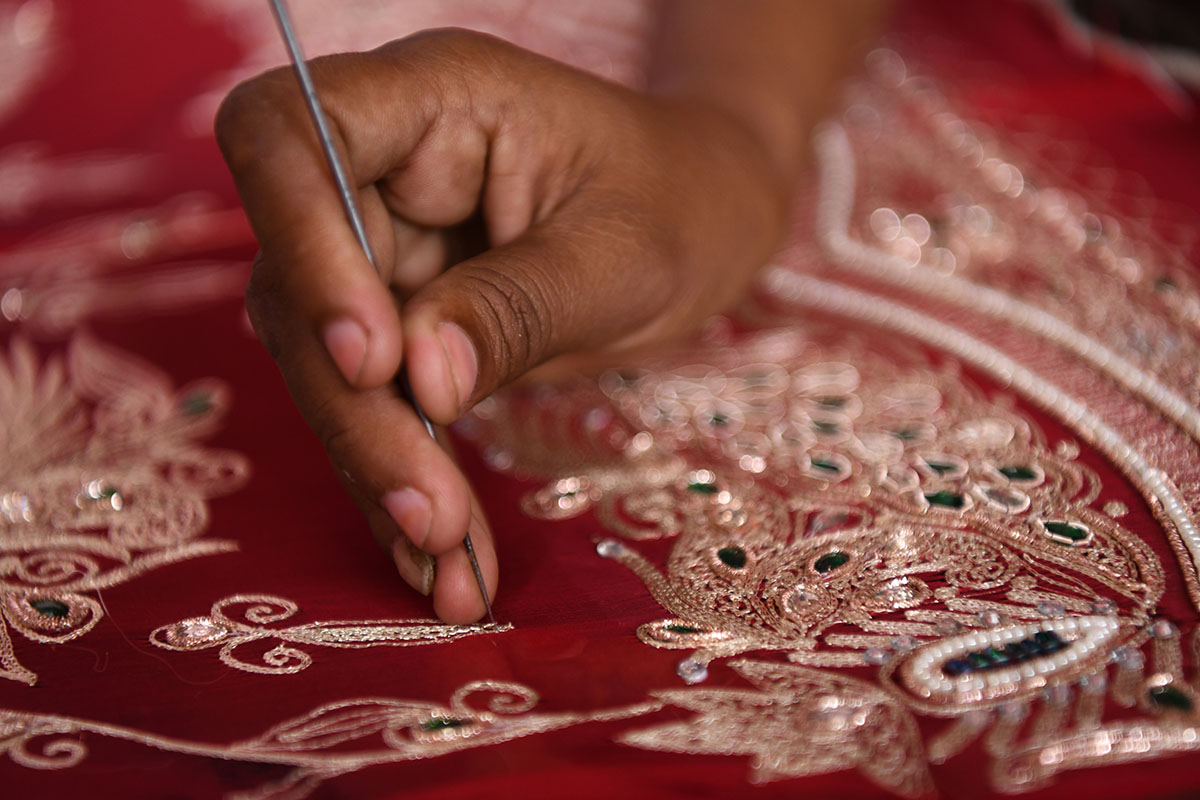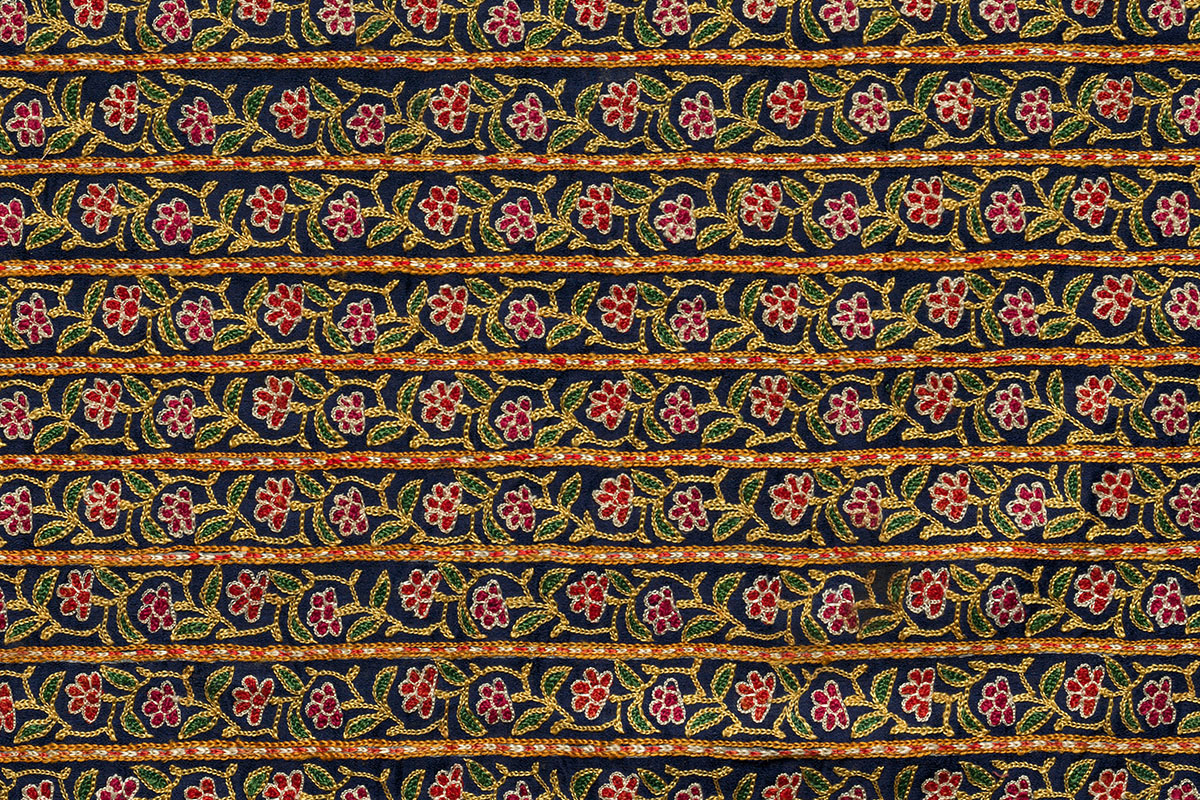ARTICLE
Ari Embroidery
A style of embroidery that involves a chain stitch created by hand using an ari — a wooden-handled tool with a long, fine needle ending in a hook, resembling a crochet hook. Ari embroidery is characterised by floral patterns and natural motifs such as birds, trees and leaves. The threads used for this embroidery range from cotton and silk to zari. Made by professional embroiderers, it is used to decorate bags and garments.
In preparation for the embroidery process, the base fabric is stretched tightly over a wooden support frame and the pattern is traced by hand. The artisan holds the thread below the material and the ari is fed from above the surface to catch and pull the thread up through the fabric, creating a loop. Each new loop is pulled through the last, securing it in place and creating a chain. This process is repeated until the chain stitch fills the outlined pattern. As a final step, the embroidered surface is sometimes flattened using a hammer.
Scholars believe that this style of embroidery originated in the twelfth century among the mochi community of Kutch, who used it to decorate leather. The craft grew in the sixteenth century under the patronage of Mughal emperors, who commissioned artisans to create textiles and decorative objects for the royal courts. By the eighteenth century, ari work was introduced to Europe through trade under the British East India Company and was adopted in France and Britain, where it is practised to this day as tambour embroidery. It is especially popular among luxury fashion houses that create intricately embroidered couture.
Bibliography
Our website is currently undergoing maintenance and re-design, due to which we have had to take down some of our bibliographies. While these will be re-published shortly, you can request references for specific articles by writing to hellomapacademy@map-india.org.









